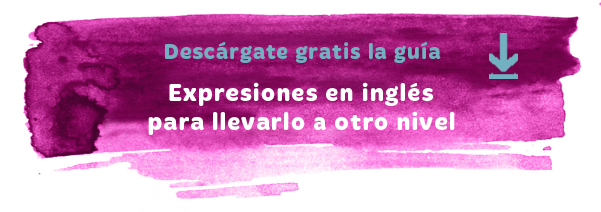What's Up! blog
el mejor contenido del mejor curso de inglés
El pasado continuo en inglés: todo lo que necesitas saber
Una de las claves para subir de nivel en inglés es controlar los matices de diferentes tiempos verbales y saber cuándo usar cada uno de ellos. Hoy vamos a dar un repaso a los tiempos continuos de pasado: el pasado continuo, el presente perfecto continuo y el pasado perfecto continuo.
Past Continuous (pasado continuo)
Uso del Past Continuous
El pasado continuo en inglés se usa para acciones que comenzaron en el pasado y de las que se quiere remarcar la duración.
En particular, suele usarse en combinación con el pasado simple cuando se quiere hablar de una acción que estaba en curso y fue interrumpida por otra.
Estructura del Past Continuous
- Afirmativa: sujeto + was/were + verbo con -ing (I was talking)
- Negativa: sujeto + was/were + not + verbo con -ing (You weren’t listening)
- Interrogativa: was/were + sujeto + verbo con -ing (Was Sam singing?)
Ejemplos de Past Continuous
- Yesterday, I was having a shower when the doorbell rang. La acción más larga (darse una ducha) estaba sucediendo cuando fue interrumpida por otra (sonó el timbre de la puerta).
- Newton was sitting in an orchard when an apple fell on his head. La acción de estar sentado en el manzano tenía cierta duración, pero la caída fue instantánea.
Ejercicios de Past Continuous
Las soluciones las encontrarás al final del artículo.
- I _____________ (finish) my degree when I __________ (meet) Julian.
- I _____________ (not look) where I __________ (go) so I __________ (trip).
- I _____________ (see) the ball that __________ (roll) towards me.
Present Perfect Continuous (presente perfecto continuo)
Uso del Present Perfect Continuous
Este tiempo se usa para hablar de acciones que han comenzado en el pasado pero que duran hasta el presente o que han terminado recientemente. Queremos enfatizar los resultados de la acción en el presente.
Como nos estamos refiriendo a algo que hacemos durante un periodo de tiempo, podemos usar las preposiciones for y since.
Estructura del Present Perfect Continuous
- Afirmativa: sujeto + have/has been + verbo con -ing (I have been studying English hard the whole night).
- Negativa: sujeto + have/has been + not + verbo con -ing (You haven’t been training enough for the marathon).
- Interrogativa: have/has + sujeto + been + verbo con -ing (Has she been smoking again?).
Ejemplos de Present Perfect Continuous
- I have been practising martial arts for 7 years now – I’ll get my black belt very soon. En esta frase, buscamos resaltar nuestra experiencia.
- It’s been raining for three days straight! Aquí queremos enfatizar la duración de la acción y el hecho de que sigue ocurriendo.
Ejercicios de Present Perfect Continuous
Las soluciones las encontrarás al final del artículo.
- The children _____________ (eat) chocolate and now they’re covered in it!
- I _____________ (serve) coffee all morning and I still __________ (not have) a break.
- She’s soaked through! She _____________ (probably walk) in the rain.
Past Perfect Continuous (pasado perfecto continuo)
Forma del Past Perfect Continuous
- Afirmativa: sujeto + had + been + verbo con -ing (I had been travelling for 6 months).
- Negativa: sujeto + had + not + been + verbo con -ing (She had not been working here long when she got her first raise).
- Interrogativa: had + sujeto + been + verbo con -ing (Had you been studying maths for long before the exam?).
Uso del Past Perfect Continuous
El pasado perfecto continuo se usa para hablar de acciones que estaban ocurriendo antes que otra . Al igual que ocurre con el pasado continuo, usamos este tiempo para hablar de la acción que estaba en curso y el pasado simple para la acción que la interrumpe. Como estamos hablando de periodos de tiempo, podemos usar for y since.
También se usa el pasado perfecto continuo para demostrar causa y efecto en el pasado.
Ejemplos de Past Perfect Continuous
- I had been looking for a new computer for 3 months when I finally found the right one. Una acción larga (buscar un ordenador nuevo) queda interrumpida por una acción corta (encontrarlo).
- I was tired because I had been training too much. Este el típico ejemplo de relación causa efecto: estamos cansados (efecto) porque hemos estado entrenando demasiado (causa).
Ejercicio sobre Past Perfect Continuous
Las soluciones las encontrarás al final del artículo.
- She _____________ (climb) for hours when she finally ___________ (reach) the summit.
Soluciones
Past Continuous
- I was finishing my degree when I met Julian.
- I wasn’t looking where I was going so I tripped…
- I saw the ball that was rolling towards me.
Present Perfect Continuous
- The children have been eating chocolate and now they’re covered in it!
- I have been serving coffee all morning and I still haven’t had a break.
- She’s soaked through! She has probably been walking in the rain.
Past Perfect Continuous
- She had been climbing for hours when she finally reached the summit.
Post relacionados:




